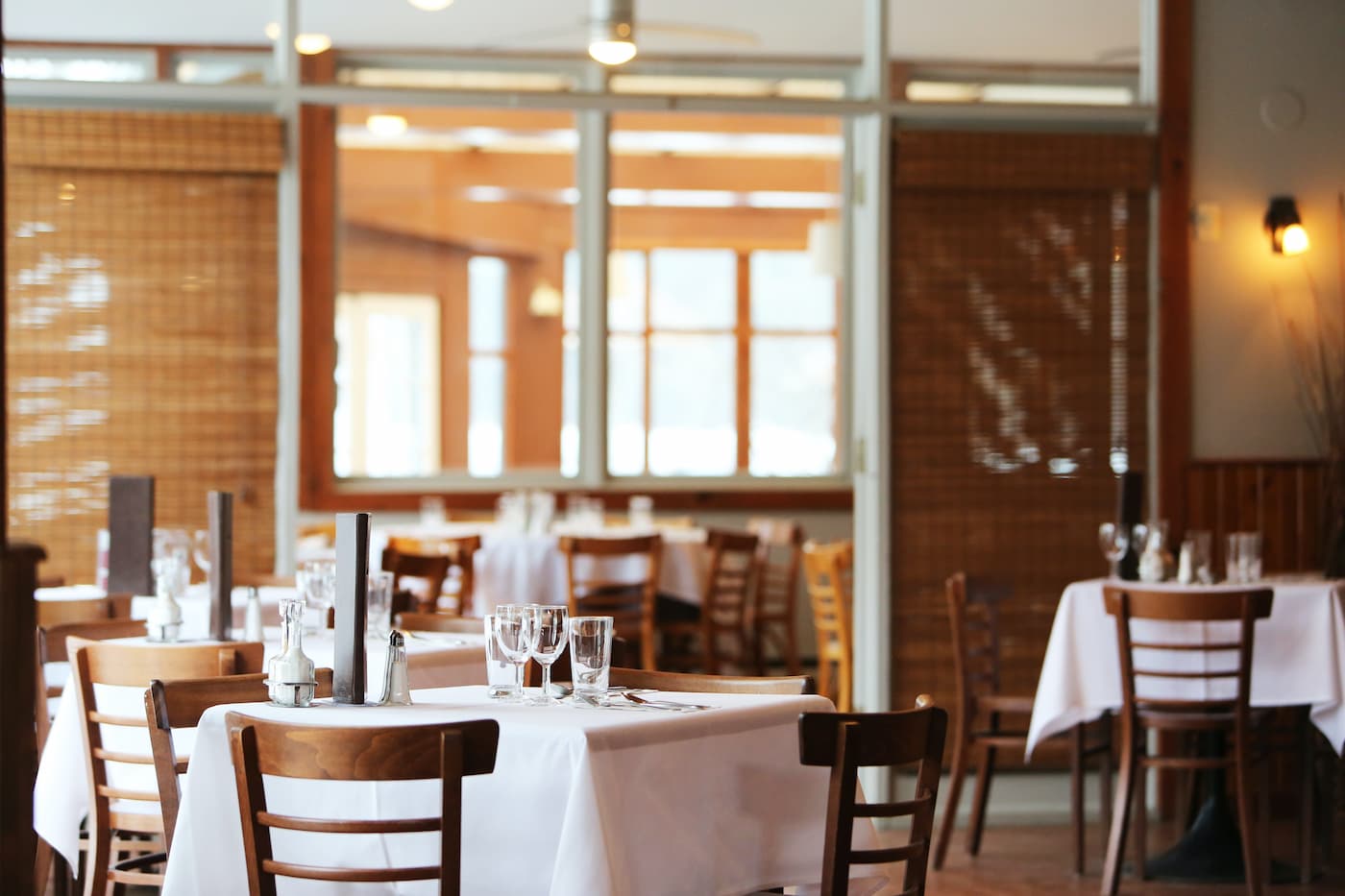What to know about leasing a restaurant space
Editorial Team
7 min read
Does a restaurant even exist if it has no place to call home? With ghost kitchens and food trucks on the rise, the answer to that question isn’t as clear cut as you might think. For many restaurant owners, operators, and managers, running a restaurant requires a physical space to act as a base of operations.
Here’s a look at some of the steps that go into leasing a restaurant and how you can help make sure that the space you choose is going to work for your needs today, tomorrow, and hopefully for years to come.
Average cost of renting a restaurant space
Cost is a primary concern when you’re determining what space to rent for your restaurant. The relationship between the amount of money you bring in and how much you know you’ll have to spend each month on rent and other business-related expenses can have an impact on your restaurant’s profit margin.
The average cost to rent a restaurant space can range considerably depending on factors such as geographic location (city), neighborhood (already popular or up-and-coming), type of space, and so on. For instance, a fine dining restaurant in a hugely popular live-and-work complex may have a much higher cost-per-square-foot than a pizzeria on an otherwise quiet street.
One survey of restaurant owners nationwide resulted in this snapshot about restaurant occupancy costs:
• Median monthly base rent: $5,000
• Median square footage of restaurant space: 3,500 sq. ft.
• Base rent per sq. ft./month: $1.50
• Base rent per sq. ft/annual: $18.00
You can use those figures as a guideline while putting together your own business plan and scouting spaces that feel right for your concept, but a big part of your financial security will be aligning your leasing costs with your projected revenue, which we discuss a bit more below. Also, don’t forget about variable costs associated with your lease such as insurance, utilities, and license renewals.
How to lease a restaurant space
Leasing a restaurant space can be a daunting experience, but a little bit of preparation can go a long way. This prep is not negotiable because deciding on which space to rent could be one of the most important decisions you make in your entire career.
1. Put together a business plan and budget
Before looking at rental spaces, it’s a good idea to have a restaurant business plan and budget in place to help you determine the type of space you need and how much rent you can afford. Consider doing market research, pulling data to help predict revenue, and calculating how much you can spend while still having some financial wiggle room in case things don’t go as expected.
- As a general best practice, your total occupancy costs (rent, property taxes, insurance, etc.) should not exceed 6-10% of your gross sales.
- Your revenue won’t be consistent month to month, so don’t predict the entire year based on a 30-day period that could reflect factors outside of your control such as holidays, tourist season, etc.
Sometimes a pricier space in a more popular area can increase your revenue, but it’s not always a guarantee.
2. Research the location and neighborhood
Talk with a real estate agent about what you’re looking for in a restaurant space for lease, but also be open to suggestions. You’ll want to start with a wish list, but evaluate each space thoroughly and choose a good location for your business based on:
- The neighborhood: A popular neighborhood will come with better traffic and visibility, but it can cost more than establishing your business in an up-and-coming neighborhood.
- The street: Is it one way? Is it well lit? Is it convenient to find and park if people are traveling from outside the general area?
- What other businesses are nearby: Look at your direct competition (you probably don’t want to open a Mexican restaurant in a neighborhood that already has three taquerias), but also at the general makeup of the area. You can benefit from joining an already-bustling enclave that includes other businesses such as boutiques, galleries, and play spaces, so customers can make your spot part of their weekly excursions. Think, too, about potential cross-marketing; you can partner with neighboring businesses to throw block parties or refer customers.
- Turnover: If there have been half a dozen businesses in the newly for-rent space in as many months, there may be a reason that location isn’t working.
3. Consider sales goals that will cover expenses
Before you sign a restaurant lease, consider if your sales will be able to cover your expenses including your rent, restaurant POS system, employee costs, and more. One of the best ways to do that is to calculate the space’s cost per square foot, how many people you can seat, and how much you’d need to sell per seat to make all the numbers work. You may love a space that seems feasible at first but realize later that you can’t seat enough people per day at a reasonable per-person average (PPA) to meet your sales goals.
Figuring all this out ahead of time can help prevent you from renting a restaurant space that’s simply unable to get you to your bottom line. If you’re locked into a spot that doesn’t seem realistic at first, you may be able to tweak your menu or brainstorm a new restaurant floor plan that can help you align factors and manufacture a way forward.
READ: How much does it cost to open a restaurant
4. Determine your bargaining power
Before you rent a restaurant space, you’re going to go through negotiations, and before you go through negotiations, you need to know what kind of leverage you have.
Do some digging and find out how long the space has been vacant and what kind of turnover rate the space has had in the past. Agreeing to fill a long-empty storefront could help you score a great deal, as could sharing your own successful business history or explaining how your restaurant will help fortify the area (a major bonus if the owner also owns the rest of the building or nearby properties).
READ: Business scenario: Negotiating your first store lease
5. Negotiate or agree on leasing agreement
Speaking of negotiation, your restaurant lease isn’t set in stone until you sign on the dotted line and the owner’s first offer is just that: an offer.
You may be able to negotiate items such as:
- The amount of your rent
- The length of your agreement
- What improvements the owner will make and what you’re allowed to do yourself
- Extension options
- The condition the property must be in at the start and end of the lease
There are many more items to cover, so it’s usually best to enlist the help of a broker who knows exactly what to look for, what’s industry standard, and what should make you walk away for good.
Alternatives to renting a restaurant space
If leasing a restaurant space doesn’t feel like the right move, you still have options.
- Buy a restaurant space. Instead of renting a space and abiding by the restrictions set by the owner, you may want to buy your space outright. It’s a bigger responsibility in terms of financing and other factors, but you’ll also have more control.
- Use food trucks. You can also start a food truck business and take your concept to the streets. Many food trucks can eventually evolve into brick-and-mortar businesses, so this can be a great way to fine-tune your concept and generate some capital in the meantime.
- Start a ghost kitchen. Lastly, you can open a ghost kitchen, which involves preparing your food in a rented commercial kitchen or at someone else’s restaurant, offering food for delivery only.
There is more than one way to turn your dreams of owning or running a restaurant into a reality. Use the tips above to help guide you as you consider leasing the right restaurant space for your needs, then contact a Clover Business Consultant to find out how we can help you run your restaurant as smoothly as possible.
CONTACT SALESThis information is provided for informational purposes only and should not be construed as legal, financial, or tax advice. Readers should contact their attorneys, financial advisors, or tax professionals to obtain advice with respect to any particular matter.
Related Posts
What is small business insurance? Here’s what you need to know
15 restaurant interview questions to ask job candidates
Popular Topics
Stay In Touch
Sign up and learn more about Clover.
Thank you for your subscription!
Recent Stories
- Jewelry store supplies and equipment needed for opening day
- How small businesses can use employee discounts to retain staff
- Tips and tricks for opening an outdoor pop-up restaurant
Please share your contact information
to access our premium content.
Thank you for sharing your contact information.
Download Now





